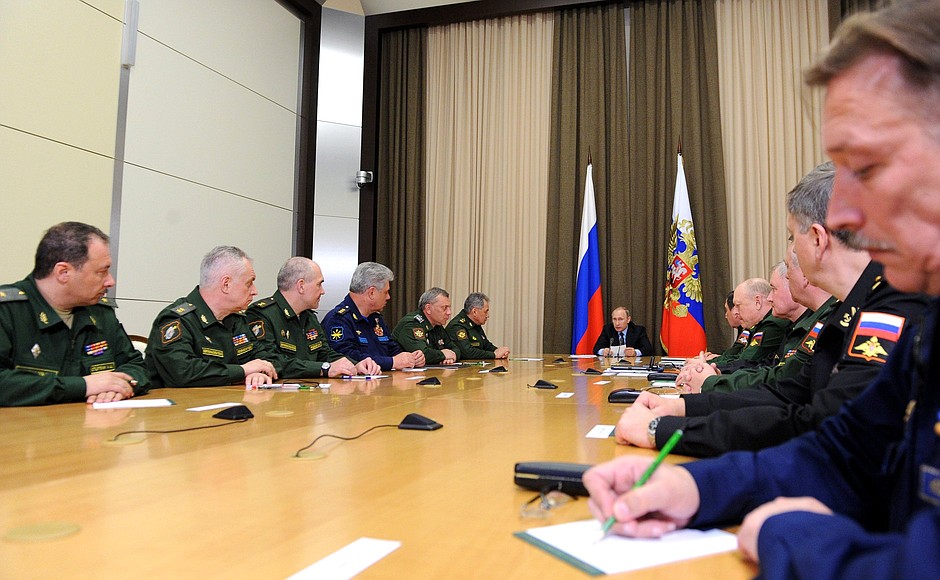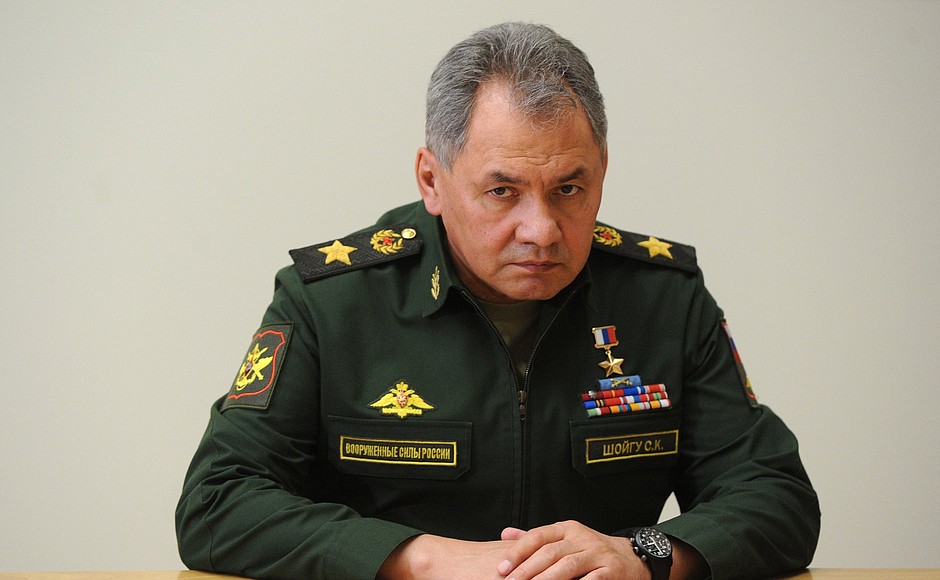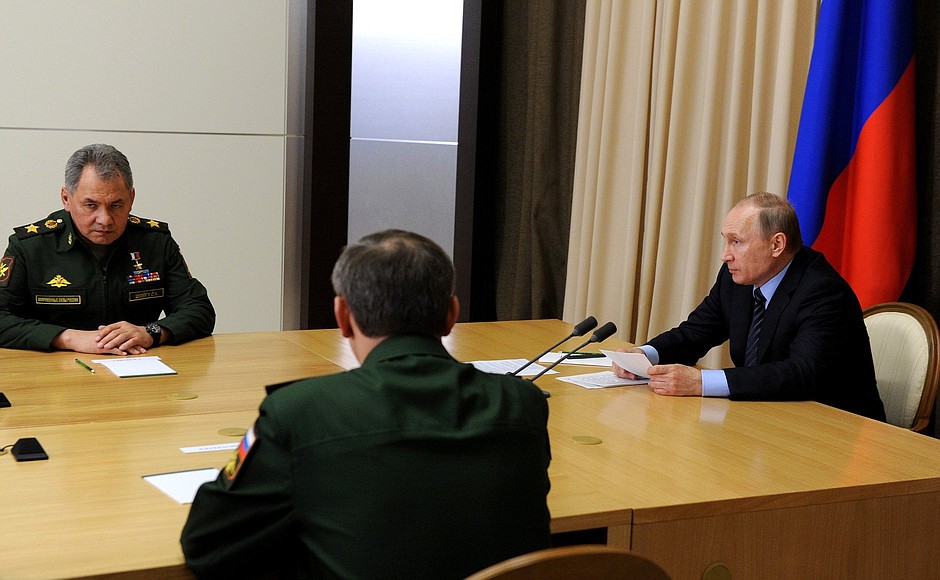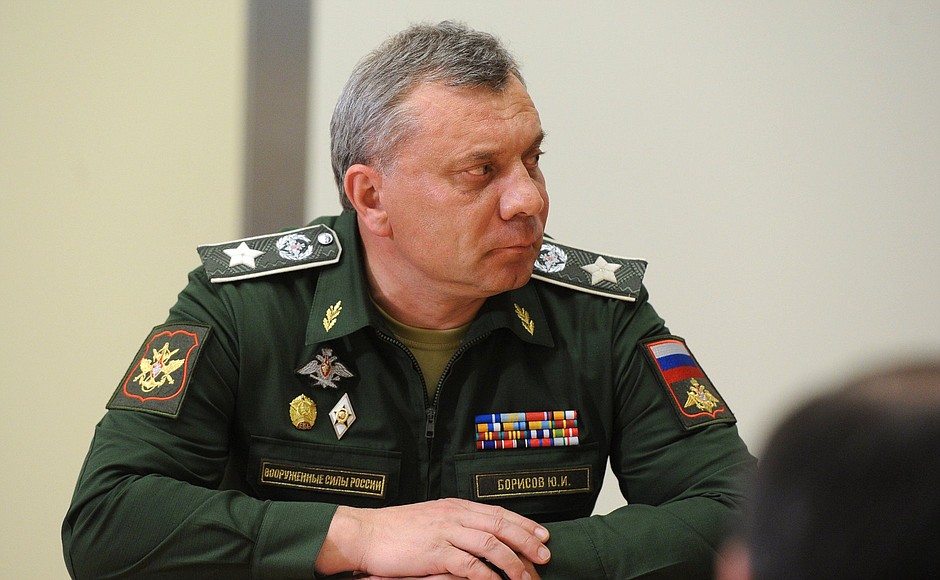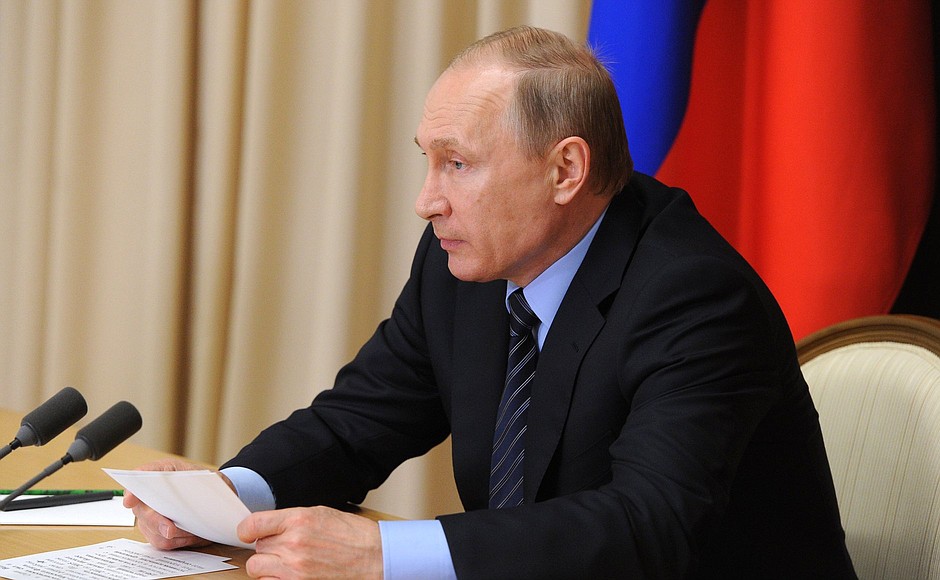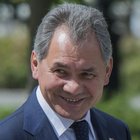This is the first in a series of meetings on the Russian Armed Forces’ development and defence industry upgrading.
* * *
President of Russia Vladimir Putin: Good afternoon, colleagues.
We are starting our seventh series of meetings with the leadership of the Defence Ministry and the defence industry. We are going to discuss the development of the Armed Forces and the defence industry, as well as the results achieved by the Russian Aerospace Forces and the Navy during the antiterrorist operation in Syria.
The format we launched a few years ago and have been using since 2013 seems to be working. We discuss in detail all that is happening at this point in time, look at what we have done over the preceding few months, and set tasks for the short term.
More than 200 orders have been formulated in the course of these meetings, and more than 150 of them have been fulfilled. The others are in the works in line with the established deadlines, and we certainly need to retain this pace.
The Armed Forces have seen notable improvements in recent years: higher quality and intensity of combat training and better equipment.
It is also clear that the Armed Forces have seen notable improvements in recent years: higher quality and intensity of combat training and better equipment, with the share of cutting-edge weapons and equipment at 47.2 percent. If I am not mistaken, it was about 30 just three years ago. The improvement is obvious, and its pace generally acceptable. I hope it will reach around 50 percent by the end of this year. Is that the planned figure, Mr Shoigu?
Defence Minister Sergei Shoigu: 51 percent.
Vladimir Putin: It is important to keep moving ahead consistently. We still need to implement a major plan of equipping the army and navy with new hardware and weapons and increase the serviceability of the existing equipment to 92 percent.
The effectiveness and high quality of Russian weapons have been demonstrated in Syria. Our Aerospace Forces and the Navy have shown this perfectly.
Since the beginning of the military campaign against international terrorists on the territory of the Syrian Arab Republic, the Aerospace Forces have conducted over 10,000 combat flights and carried out numerous strikes, hitting over 30,000 targets, including over 200 oil producing and processing facilities.
There were 115 cruise missiles launched from both air and sea, including by submarines and surface vessels, as well as from strategic bombers. Long-range bombers performed 178 combat flights.
The effectiveness and high quality of Russian weapons have been demonstrated in Syria. The strikes from the air and sea against ISIS and Jabhat al-Nusra and their infrastructure proved a game changer in the struggle against the terrorists.
The strikes from the air and sea against ISIS and Jabhat al-Nusra and their infrastructure were precise, powerful and effective. This proved a game changer in the struggle against the terrorists, although we do understand that the situation there remains challenging, and the Syrian Army still has much to accomplish.
Creating conditions for a political settlement in the country is what matters most. I hope that the mechanism that we have put in place with our partners, including the US (the Armed Forces, your representatives and experts are actively involved in these efforts), would bring about positive and radical change in that country.
Overall, with the support of the Russian Aerospace Forces, the Syrian Army has been able to free over 500 communities from terrorists, including, as we all know, Palmyra, a pearl of world culture and civilisation.
That said, the Syrian operation has enabled us to identify some problem areas and shortcomings that we will focus on during today’s meeting. Every issue must be investigated in the most thorough manner. I am talking about a professional investigation, a thorough analysis that will lead to concrete measures to ultimately eliminate these issues. This would enable us to further adjust our plans to develop and improve weaponry.
Let us get down to work.
<…>
